The launch of the Petronas Global Research and Technology Centre in Turin, Italy earlier in the year was indicative of the national oil and gas company’s ambitions for its Petronas Lubricants International (PLI) division. The new facility, developed to the tune of US$60 million (RM235 million), is claimed to boast state-of-the-art laboratories, facilities and equipment for the development of new fluid technologies.
Petronas said that the centre is expected to enhance its ongoing work with over 45 automotive original equipment manufacturers (OEM) in designing engines and their fluids together for markets worldwide, as well as growing industry-leading talent and diversifying PLI’s product portfolio.
Now, you may be wondering why a Malaysian oil and gas company has decided to open a global research facility some 10,000 km away in northern Italy. Of course, part of it has to do with Petronas leveraging on more than 100 years of heritage with Selenia, a brand of lubricants previously owned by Fiat and acquired by Petronas in 2008 – right around the time the latter established PLI.
In fact, the new R&T centre sits right next to the old Selenia plant in Villastellone, which still produces lubricants to this day – including the cutting-edge Syntium fluids used by the Mercedes AMG Petronas Formula 1 team. The current PLI R&T centre, housed within the factory complex, remains operational until the new facility is fully completed next month.
Managing director and CEO of PLI Giuseppe D’Arrigo explained that the location of the new facility needed to reflect the international nature of its people and its OEM customers. “If you look at the makeup of our workforce, we are a truly international company – more than 50 nationalities, many languages. And our customers are truly local, where they are.
“The choice to invest in this facility was a hard one, because you are looking at where your customers, where your scientists, where the next phase of development is coming from. The fact that the new R&T centre is located here is due to the fact that all the major OEMs are in this area, that Turin is actually one of the world capitals of the automotive [industry], and it’s also excellent in terms of engineering capabilities.”
D’Arrigo added that apart from building the global R&T centre, PLI has also invested in satellite centres that enable it to work more closely with car companies. These include facilities in Chicago in North America, Belo Horizonte, Brazil in South America, Durban in South Africa, Nanning in China and an upcoming one in Mumbai in India. There’s also a global molecular research centre in Bangi.
But the facility itself – and the RM235 million investment – is only part of the story. D’Arrigo said that the company wants to be the fluid technology partner of choice for its customers by focusing on the reduction of carbon dioxide emissions. “CO2 [reduction] is becoming a leading theme across the globe, not just in Europe but in Asia as well. We believe that kind of delivery is made through our own investment.
“We’ve quadrupled our investments since 2015, and five times since 2012. We’re committing around 75% of our new budget from this year onwards to CO2 emissions reduction projects, working on all the fluids – not just engine oil but also fluid for the axle, the gearbox, the hybrid components as well,” he said, adding that these components work together to improve performance and reduce emissions at the same time.
D’Arrigo gave the company’s thinnest engine oil for heavy-duty vehicles – the Urania Next 0W-20 created in partnership with Iveco, which took five years to develop and is claimed to have not seen any competition from other companies since it was launched last year – as an example of this initiative. “To achieve such a feat of efficiency, you have to engineer [the lubricants] together with the OEMs. You cannot work at the end of the [production] chain to develop a standard package that can reduce emissions substantially,” he said.
His remarks were echoed by head of group project delivery and technology Eric Holthusen. “We’re now at the point where you can no longer wait for the automotive industry to give you and engine and say to you to develop an oil for this. If you want to make the next step you have to co-engineer, to cooperate. Like we did for Formula 1 and for Iveco truck engines, we develop the engines and lubricants in parallel.”
Petronas is also said to be working with Fiat and other carmakers to develop low-viscosity engine oils for passenger car applications, and is also actively developing lubricants for liquified natural gas (LNG) and compressed natural gas (CNG) hybrid heavy-duty vehicles in China for future transportation needs. The company is also the leader for LNG and CNG engine lubricants through its work with Iveco, said D’Arrigo.
One of the topics touched upon was Petronas’ heavy involvement in motorsport, which isn’t limited to Formula 1 – it also has its hands in MotoGP (with the Petronas Sprinta Racing Moto3 team), GT racing, rallying and the Dakar Rally (with the Petronas De Rooy Iveco team). CoolTech, a molecule now found in Syntium lubricants, is an example of how going racing has improved its products, D’Arrigo said.
“CoolTech is a particular molecule that we designed for Formula 1 for the Mercedes AMG Petronas team,” he said, before remarking on the difficulties faced by the team in 2014 with the then-new turbocharged V6 engine and hybrid powertrain. “We had a problem with these downsized engines, which have increased heat and reduced [air] intake because of the aerodynamics of the cars.
“So we had to ensure that the overheating was not impacting the performance, reliability and efficiency of the engine and the car. CoolTech allows much better management of oxidisation, management of thermal stability, management of wear as well. The combination of those components in Syntium allowed us to get the best performance out of our Formula 1 car, [which was] then translated into our everyday product.”
Holthusen explained CoolTech’s function in greater detail. “What we see in downsized engines, it is becoming more and more important to manage the heat inside the engine,” he said. “Your temperature gauge in the car will still show the same [reading], but you have hotspots in the engine, particularly in a turbo engine, that the coolant as a liquid cannot get to. So we use the lubricant as support.
Of course, using the lubricant to draw heat from critical areas of the engine brings with it a different set of challenges. “First of all you need to have a lubricant that is very stable in terms of oxidisation, so it doesn’t degrade in a high [temperature] environment. Secondly it has to have a good heat coefficient so it can actually take that heat and transport it to the oil cooler and then get cycled back. That’s something that we have used since the beginning of the new Formula 1 engine, and that’s what we have brought into Syntium.”
Branding is another area that has benefitted massively from motorsports involvement. “It’s a great platform for us,” D’Arrigo said. “Being into motorsport allows us to be recognised and also be credible. If we can compete and win in the pinnacle of motorsport, under the most severe environmental and engineering conditions, we must be good. And I think it builds on our credentials and our visibility to be able to do that.”
This brings us to one of the issues Petronas currently faces – its perceived inferiority compared to other, more established brands. D’Arrigo is well aware of customers who still feel that its products aren’t as good as those of the big names in the industry, despite its success in the higher echelons of motorsport. He insisted, however, that it’s a good problem to have.
“It would be much worse if our products were indeed inferior and not to the standard of our competitors. In fact, our products are better, because they have a much better quality in the base oil that we produce from the wells and [quality] control throughout production. They’re better in terms of technology, because they are tested in the most extreme conditions.”
D’Arrigo said that the company simply needs to be able to convince partners, distributors and regular people on the ground to try Petronas products. “I think it’s just a matter of time until people see to that. Again, it would be much worse if it was the other way around – you’ve got a very good brand standing, but in fact the product is not as good. Which – and I don’t want to talk about others – is certainly not our case.”
Last but not least, the future. We’ve been seeing the rise of electrification in cars in recent years, but D’Arrigo doesn’t believe that a widespread adoption of electric vehicles will happen in the next decade. We don’t think that the technologies and infrastructure today is able to support this transition in a very smooth and economical way,” he said.
The way the company sees it, a mix of technologies and fuels, such as LNG and hybrid power, will continue to power transportation needs in the near future. “We think those technologies will transition ourselves to the future,” D’Arrigo said. “The transportation and automotive mix for energy is just a small part of the overall energy consumption in the future, and Petronas will always play a role in that.”
Again, Holthusen agreed. “Cars with internal combustion engines will be with us for a long time, particularly in South East Asia where the market is going up. The number of customers for our traditional products will still increase; new engines will come and we will develop new products.”
Nevertheless, Petronas is said to be ready for the wave of electrification, whenever that may be. The company is already supplying battery coolants for Mercedes AMG Petronas as part of the Tutela range of fluids, and has a team that is exploring more innovative products. Holthusen added that even without a traditional engine, an electric vehicle will still have lubricants within them.
“A standard passenger car on the road has about nine kilograms of lubricants, which is the engine lubricant, gearbox, axle oils; there’s also grease on the wheel hubs. An electric car has about 2.5 kg, so there is a reduction. But an electric car does not run without lubricants. We’re testing gearboxes, axles, wheel hubs, so as to optimise components that you will still find when there is no more internal combustion engine.”
So long story short, there’s a lot riding on the new facility, as PLI transitions itself to a more emissions-conscious future for the automotive industry. From the evidence that we have seen, the company has already done a lot of good work with carmakers on that front, and that looks set to continue.
- TURIN, ITALY – MARCH 14: (L-R) Valtteri Bottas and Lewis Hamilton, Mercedes-AMG Petronas Motorsport drivers, perform doughnuts in an Mercedes-AMG car at the PETRONAS Global Research and Technology Centre preview on March 14, 2018 in Turin, Italy. The $60m facility will drive PETRONAS’ cutting edge technology and will lead the global development of fluids and lubricants including those developed for the Mercedes-AMG PETRONAS Motorsport Team. (Photo by Guido De Bortoli/Getty Images for Mercedes-AMG PETRONAS)
- TURIN, ITALY – MARCH 14: (R-L) Dato Sri Syed Zainal Abidin Syed Mohd Tahir, PETRONAS Vice President of Downstream Marketing, Toto Wolff, Team Principal and CEO Mercedes-AMG Petronas Motorsport, Giuseppe D Arrigo, PLI Group Chief Executive Officer, Lewis Hamilton and Valtteri Bottas, Mercedes-AMG Petronas Motorsport drivers attend the PETRONAS Global Research and Technology Centre preview on March 14, 2018 in Turin, Italy. The $60m facility will drive PETRONAS’ cutting edge technology and will lead the global development of fluids and lubricants including those developed for the Mercedes-AMG PETRONAS Motorsport Team. (Photo by Guido De Bortoli/Getty Images for Mercedes-AMG PETRONAS)
- TURIN, ITALY – MARCH 14: (L-R) Dato Sri Syed Zainal Abidin Syed Mohd Tahir, PETRONAS Vice President of Downstream Marketing, Toto Wolff, Team Principal and CEO Mercedes-AMG Petronas Motorsport and host attend the PETRONAS Global Research and Technology Centre preview on March 14, 2018 in Turin, Italy. The $60m facility will drive PETRONAS’ cutting edge technology and will lead the global development of fluids and lubricants including those developed for the Mercedes-AMG PETRONAS Motorsport Team. (Photo by Guido De Bortoli/Getty Images for Mercedes-AMG PETRONAS)
- TURIN, ITALY – MARCH 14: (L-R) Lewis Hamilton and Valtteri Bottas, Mercedes-AMG Petronas Motorsport drivers, arrive at the PETRONAS Global Research and Technology Centre preview on March 14, 2018 in Turin, Italy. The $60m facility will drive PETRONAS’ cutting edge technology and will lead the global development of fluids and lubricants including those developed for the Mercedes-AMG PETRONAS Motorsport Team. (Photo by Guido De Bortoli/Getty Images for Mercedes-AMG PETRONAS)
- TURIN, ITALY – MARCH 14: Valtteri Bottas, Mercedes-AMG Petronas Motorsport driver, attends the PETRONAS Global Research and Technology Centre preview on March 14, 2018 in Turin, Italy. The $60m facility will drive PETRONAS’ cutting edge technology and will lead the global development of fluids and lubricants including those developed for the Mercedes-AMG PETRONAS Motorsport Team. (Photo by Guido De Bortoli/Getty Images for Mercedes-AMG PETRONAS)
- TURIN, ITALY – MARCH 14: (L-R) Valtteri Bottas and Lewis Hamilton, Mercedes-AMG PETRONAS Motorsport drivers, attend the PETRONAS Global Research and Technology Centre Preview on March 14, 2018 in Turin, Italy. The $60m facility will drive PETRONAS’ cutting edge technology and will lead the global development of fluids and lubricants including those developed for the Mercedes-AMG PETRONAS Motorsport Team. (Photo by Guido De Bortoli/Getty Images for Mercedes-AMG PETRONAS)
Looking to sell your car? Sell it with Carro.

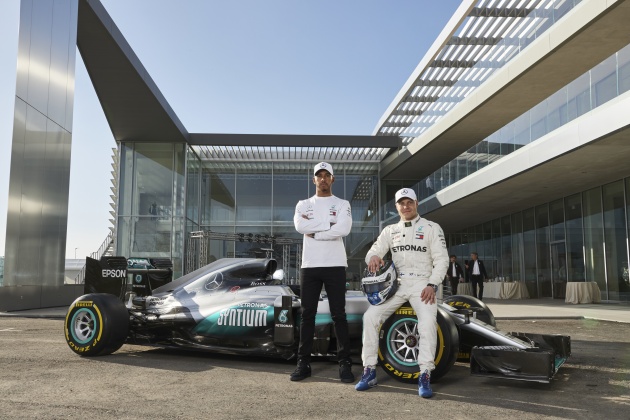
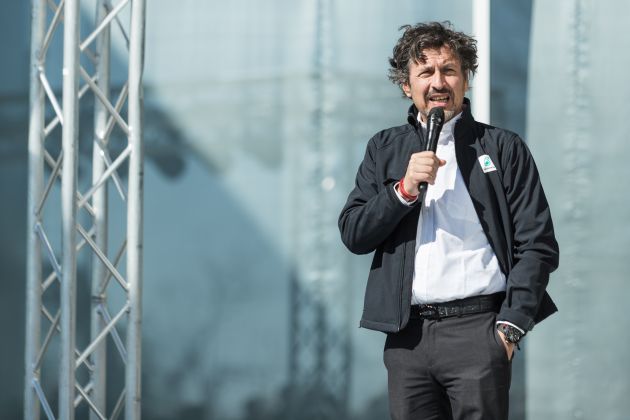
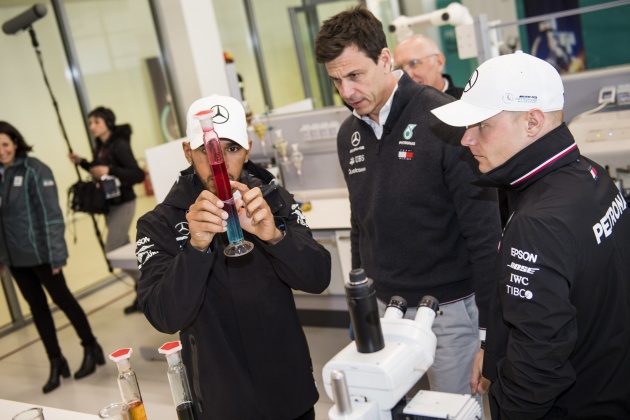
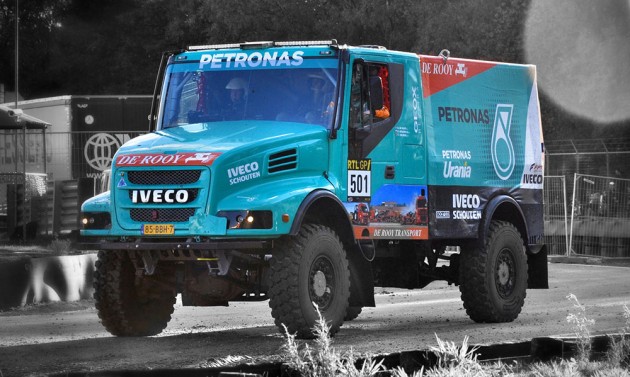
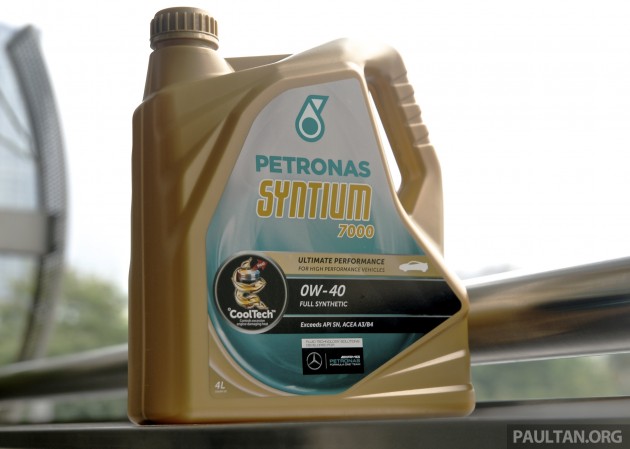
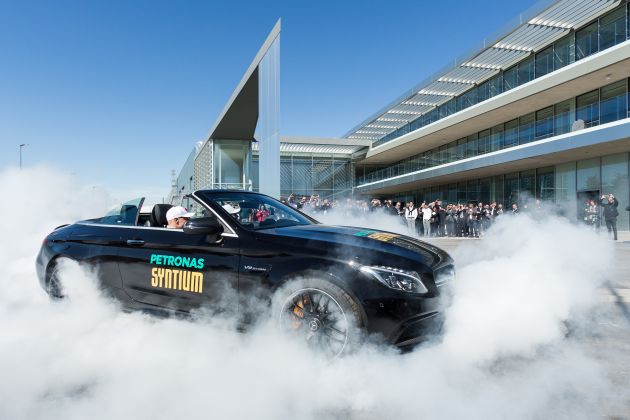
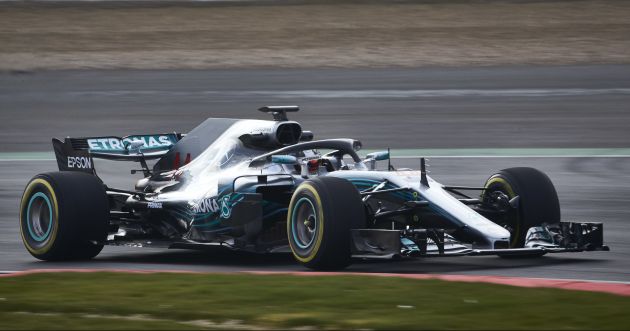




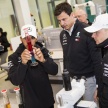
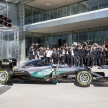
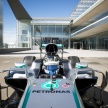























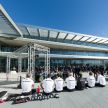










Why doesn’t petronas offer European products here in Malaysia ?
Many cars here now need better oil than what petronas provides , example 30w oil is only available as semi synthetic or proton oem oil , what the about the other users ?
We too want to leverage on the technologies that they can provide.
this is how GLC should be! a true global player. we can see petronas in major motosports event.F1,DTM,Paris Dakar, Motogp and of course Cubprix
as far as i know all 10w30, 5w30 or 0w30 lubes are fully synthetic, from Fuchs to Eneos to Pennzoil to Syntium. unless of course you can show us where to get mineral oil at that low viscosity,i’m all ears.
Yet in msian market they still give us the archaic Mach 5.
they dont ‘give’ us only Mach5. Mineral, semi and full synthetic also have, tengok budget you la…. if thats such an issue for you, go get Syntium 7000 full synthetic.
The point is they have gv better product overseas than here in msia. Try and compare the same syntium 800 here and europe and u will find european one have better standards than the one sold here. Typical.
care to explain what and how is it the stocks sold in Europe is “better” than here?
Define better standards. Go see Leo comment below.
The engine oil sold in Malaysian markets is suitable for our conditions here- engine types, engine sizes, affordability, RON rating, driving situation, etc, etc. There is no one engine oil specification and grade that is suitable for all regions in the world. We don’t have snow or extreme hot weather here. So why do we need such high specs and high cost?
BTW, congratulations to the Mercedes AMG Petronas F1 Team for a fantastic win at the Italian GP yesterday. The Petronas engine oil contributed a part in the win.
although i support ferrari because of Vettel and Shucmacher legacy, deep down I always proud of Petronas. They are number 1 for reasons.
F1 engine different designed engine with high spec tech and fuel also different…. In Malaysia we using RON 95 low quality fuel, our car engine designed in EURO Emission 2, 3, 4… The mixed RON 95 with lower EURO Emission engine having different chemical reaction with different chemical compounds… And yet, in Malaysia I force to use Petronas Syntium 3000 in my diesel engine in entire country of OEM Service Center… I using EURO5 diesel fuel which are bio-diesel B7 blended diesel which may have acid after combustion and high carbon compounds… My diesel engine sound is getting lounder and lounder… Petronas Syntium 3000 which cost me RM280 for 4L packaging and my diesel engine is 6.5L which Service Center charged me 2 bottles RM560… You know I manage to get Motul X-Cess 8100 recommended diesel engine oil with RM220 for 5L pakaging? This make me hate to Petronas Product..